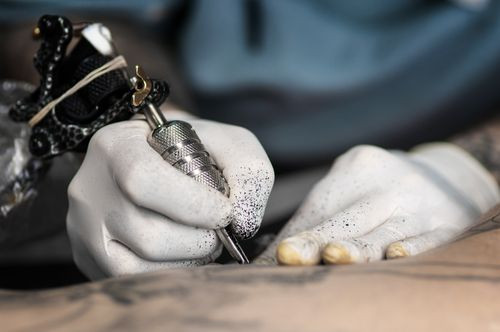Tattoos Aren't Diamonds: How Permanent Ink Works, And Why Forever Isn't Always So

Tattoos decorate arms, legs, backs, and fronts of people from all different cultures and can be traced throughout human history as a symbol of rank, memory, or reflection of personal belief or group relation. Claudia Aguirre, a neuroscientist and TED Ed educator, created a video for Ted-Ed to teach exactly how tattoos are permanent and the history of their place on our skin today.
Decorative skin markings are older than the idea of tattoos themselves, dating back to 6,000 B.C. where a Peruvian mummy was found with skin markings of his own. Now we have tattoo fads that come in and out of style and express our love for those who’ve passed, and others use them as a form of artwork, but all are a form of permanent self-expression. Unlike jewelry or clothing, they’re permanent pieces we carry with us day after day. We shed about a million skin cells every day, so how are tattoos permanent throughout the entirety of our lives?
Tattoos are drawn onto the skin by an electrically-powered machine, so to say tattoos are drawn on is to say it delicately and under-evaluates the seriousness of the procedure. The machine moves a solid needle up and down between 50 to 3,000 times per minute. The needle penetrates a millimeter into the skin’s dermis, which is the second, deeper layer of the skin. No ink is deposited into the uppermost layer of skin, known as the epidermis. This is the layer you scrub every day in the shower and sheds 40,000 cells per hour.
Not only does the tattoo's placement make it permanently locked beneath the skin’s layer, but it also inflicts damage into the dermis, which includes collagen, pigment, glands, and of course, nerves. The body reacts to the perceived pain by sending immune system cells to the wound site to begin repair and decrease inflammation.
Specialized cells called macrophages eat the ink in order to clean up and decrease the inflammation, and the cells travel back into the lymph nodes, which act as filters or traps in the body for foreign particles. Not all of the ink is removed, and those left behind remain in the dermis cells, known as fibroblasts, and remain visible on the skin. They’re cyclically absorbed by newer fibroblasts, which is why tattoos fade naturally over time.
Tattoos have gotten increasingly popular over the last decade, and with that comes more regrets. It’s a permanent decision but doesn’t have to be a permanent reminder, thanks to the advancements of technology. Laser surgery is the only way to successfully destroy pigment cells located deep within the skin. More than 36 percent of Americans between the ages of 18 to 25 have at least one tattoo. In total, there are approximately 45 million Americans of all ages who have a tattoo, and more than 17 percent of them regret it, according to the American Academy of Dermatology.
Want to remove your tattoo? The number of treatments required to remove a tattoo depends on several factors, including size, location, the individual’s healing process, how the tattoo was applied, and length of time it has been on the skin. A tattoo performed by a more experienced tattoo artist, for example, may be easier to remove since the pigment is evenly injected in the same level of the skin. A tattoo that has been on the skin for a considerable length of time may be more difficult to remove than a new one.



























